Contents
- 1 Gensler Global Cochairs Discuss Design + The Future
- 1.1 Interior Design: Congrats on the book! Why this topic now?
- 1.2 ID: What message do you want your colleagues to take away from this book?
- 1.3 ID: Your discussion of A.I.’s power to reinvent the design process is intriguing.
- 1.4 ID: How are you designing today’s workplaces to be “a destination, not an obligation,” as you put it?
- 1.5 ID: You highlight the importance of designing structures with built-in flexibility for different future uses.
- 1.6 ID: The future of cities is a sort of sub-theme of the book. Tell us about other urban challenges you’re solving for.
- 1.7 ID: Was it hard to find a writing voice that was optimistic yet urgent?
JFK International Airport, New Terminal One, in Queens, New York. Photography by Tmrw.Inc.
Within the context of Interior Design’s Giants coverage, the number Gensler is most often associated with is, of course, one, given that the global entity has topped our rankings for many years running. Other digits speak to Gensler’s scope and reach: The firm has more than 6,000 staff members spread across 53 offices and 33 practice areas and last year worked on about a billion square feet of projects ranging from airports and urban plans to office-to-residential conversions in 100+ countries. Those numbers give Gensler a lot of influence but also the burden of responsibility, which it takes very seriously. The firm leads by example through its innovative design work, its groundbreaking research, its advanced eco initiatives (including the just-launched Gensler Product Sustainability Standards), and a new book penned by global cochairs Andy Cohen and Diane Hoskins.
Design for a Radically Changing World, says Cohen, “reflects the metamorphosis we all went through”—i.e., the pandemic that altered every aspect of civic life. Adds Hoskins, “We made a conscious decision to show today’s big problems in the book: the fires, the floods, the protests, the bombed-out buildings… and the human beings at the center of all those challenges.” As leaders of an industry that often struggles to articulate its own impact and superpowers, Cohen and Hoskins do just that, positing design as the discipline best poised to manifest a brighter future. We sat down with them to hear how.
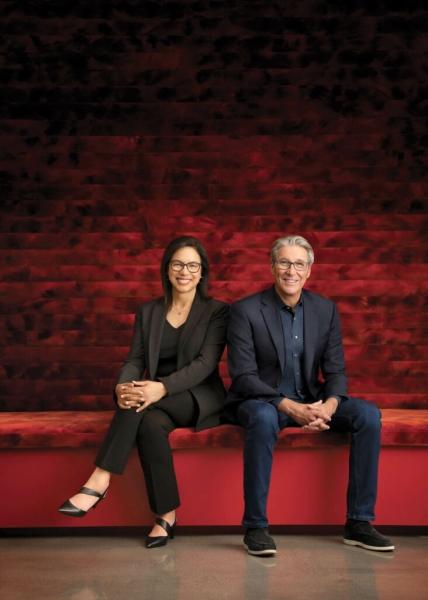
Gensler global cochairs Diane Hoskins and Andy Cohen, coauthors of Design for a Radically Changing World. Photography by Cade Martin.
Gensler Global Cochairs Discuss Design + The Future
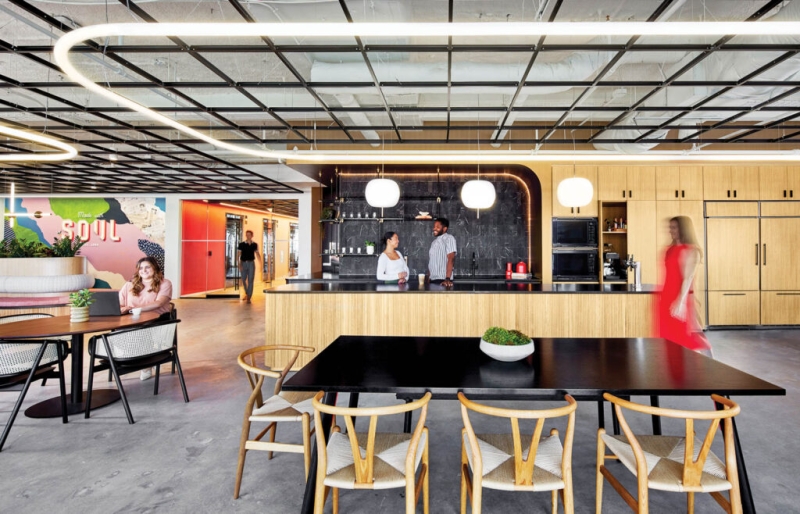
Gensler’s Atlanta office. Photography by Lauren Rubenstein.
Interior Design: Congrats on the book! Why this topic now?
Andy Cohen: We wanted to write about design’s ability to tackle the major challenges of a radically changing world head-on.
Diane Hoskins: Change is happening at such a rapid and accelerating pace, an effect we coined the “crisis multiplier” in the book. Each crisis happens so soon after the last one: climate change, COVID, geopolitical instability. It means we need to think about design very differently—and get more people to recognize that design needs to be part of the answer.
ID: What message do you want your colleagues to take away from this book?
AC: That climate change is the business imperative of our time. Nearly 40 percent of all carbon emissions is attributable to the building and construction industry. The flip side of that is: As designers and architects, we have a real opportunity to make a positive impact on climate change. Gensler’s taking a stand by committing to reducing carbon emissions in our projects by 2030.
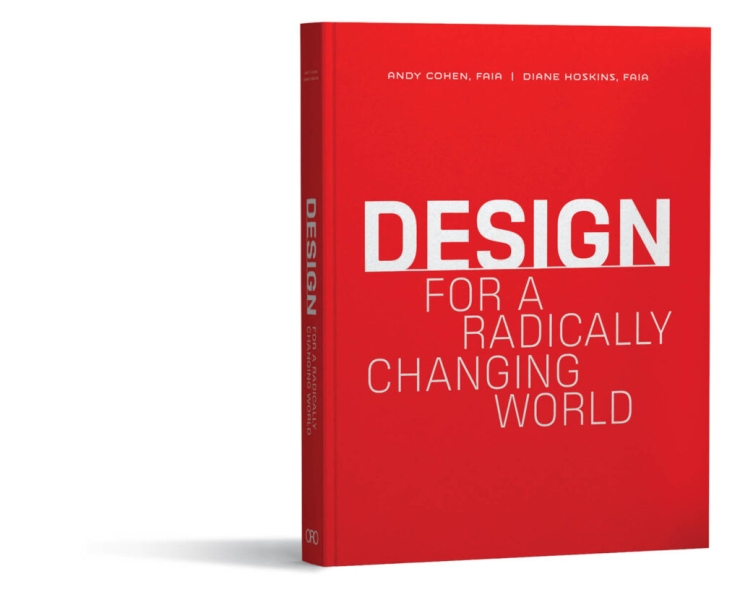
The firm’s recently released book. Courtesy Of Gensler.
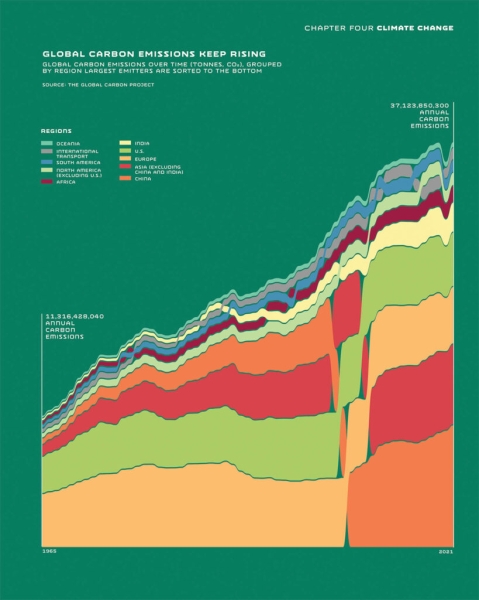
A chart from the book showing global carbon emissions by region over time. Photography courtesy Of Gensler/Data Source: The Global Carbon Project.
ID: Your discussion of A.I.’s power to reinvent the design process is intriguing.
DH: We’ve been through new technology adoption—and the training that goes along with it—multiple times in our careers: first CAD, then Revit and parametric modeling. There is not a team in our firm that hasn’t harnessed A.I. in some way. There’s a lot of enthusiasm around how A.I. allows faster iteration; it’s like being able to apply your Pinterest board or “what-ifs” in real time. It stimulates design ideation in a way we’ve never seen before. You can bring a hand sketch into a model, and then sketch again on top of that, and A.I. will convert it to the next visualization. A.I. also has the power to remove barriers to the profession, to engage young people and unlock opportunity.
AC: And it’s not just younger generations who are interested; old guys like me have never had a tool like this that translates hand-sketches into 3D reality! We just finished a really interesting project, the Santa Clara, California, headquarters of artificial intelligence–computing company Nvidia, during which the client gave us tips for how to incorporate A.I. into our process.
ID: How are you designing today’s workplaces to be “a destination, not an obligation,” as you put it?
AC: Our workplace survey showed the top reason people want to return to the office is for focus. But research also found a 37 percent drop-off in collaboration during COVID. So, these days we’re creating a phenomenal amount of living room space where people can come together. Our redesigned San Francisco office, for instance, has become a laboratory of the future workplace, with a layering of zones. The front is like a coffee shop, with music playing; the middle is collaboration space, designed with noise-attenuation technology so you don’t hear the group sitting at the next table; and the back is a pin-drop-quiet library for focusing.
DH: Design isn’t task work; it’s about the whole person. So, we focus on the power of presence and the innovation it sparks, and even more so on the culture, which comes from relationships and the ability to learn, mentor, and grow alongside each other. More and more companies are recognizing they’re at their best—from the standpoint of innovation, speed, accuracy, efficiency—when everyone’s present together.
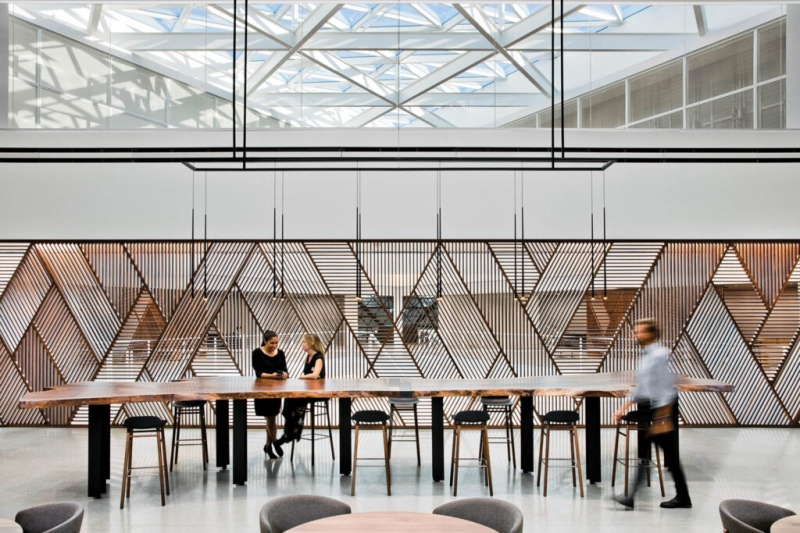
Collaboration space at Nvidia headquarters in Santa Clara, California. Photography by Connie Zhou.
ID: You highlight the importance of designing structures with built-in flexibility for different future uses.
AC: Look at all the B and C office buildings currently sitting empty, every one of which will need to be transformed through adaptive reuse. Gensler created an algorithm for cities and developers to analyze a building portfolio and determine applicability of renovation into much-needed housing. Only 25 percent of structures prove suitable, but that’s still millions of square feet. When prices drop low enough it becomes economically viable to retrofit those buildings into apartments. We just completed Pearl House, the largest such conversion to open in New York.
ID: The future of cities is a sort of sub-theme of the book. Tell us about other urban challenges you’re solving for.
DH: At the Meridian Diplomacy Forum, I met with mayors of Ukraine cities that were destroyed, to help them think through rebuilding. They know that by having a forward vision, they’re giving their people hope. Design makes hope tangible.
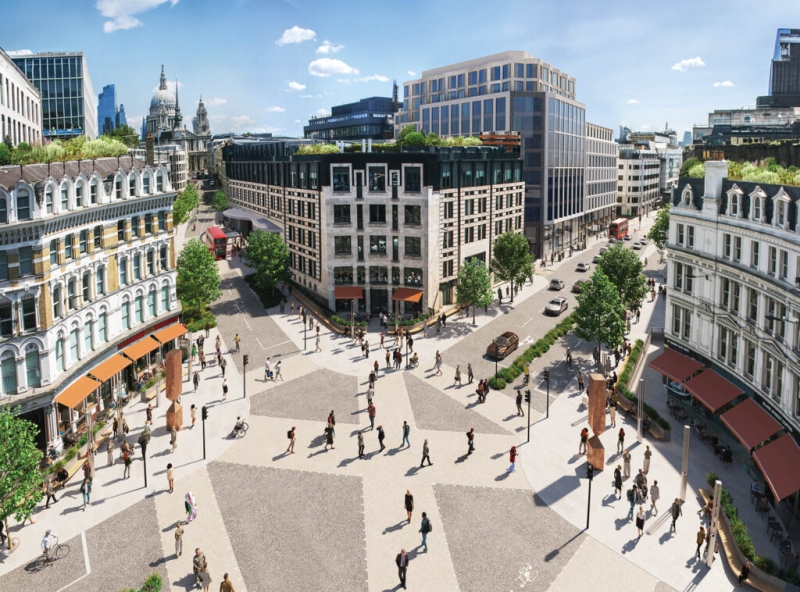
Illustration of the proposed Ludgate Circus area of opportunity in the Fleet Street Quarter of London. Photography courtesy Of Gensler.
ID: Was it hard to find a writing voice that was optimistic yet urgent?
DH: Look, we’d still be in COVID if someone hadn’t created the vaccine. It took innovation, focus, and intensity to get to that solution. It’s within our grasp to make a difference in the world. We have this power—how the design brain connects the dots and thinks big and the collaborative nature of the profession. Our discipline is really well positioned to be the problem solvers of our time. We can do it.
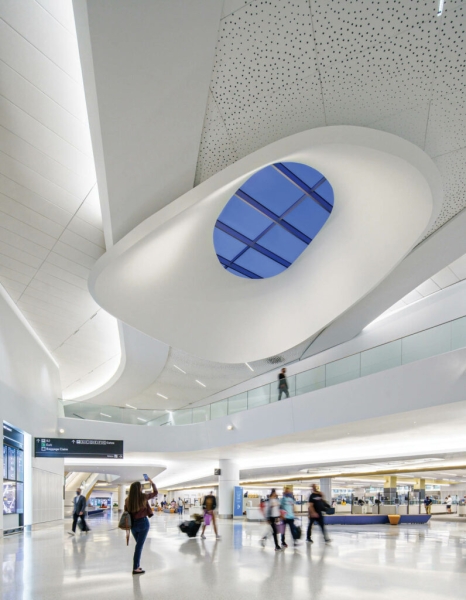
San Francisco International Airport, Harvey Milk Terminal 1, the most energy-efficient terminal in North America. Photography courtesy of Gensler & Kuth Ranieri; by Jason O’Rear Photography.
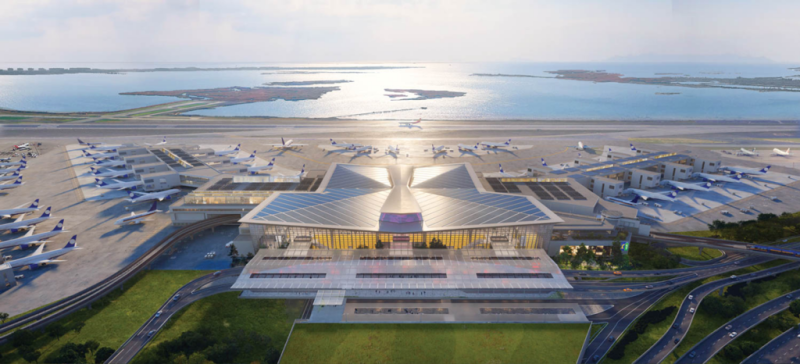
JFK International Airport, New Terminal One, in Queens, New York. Photography by Tmrw.Inc.
